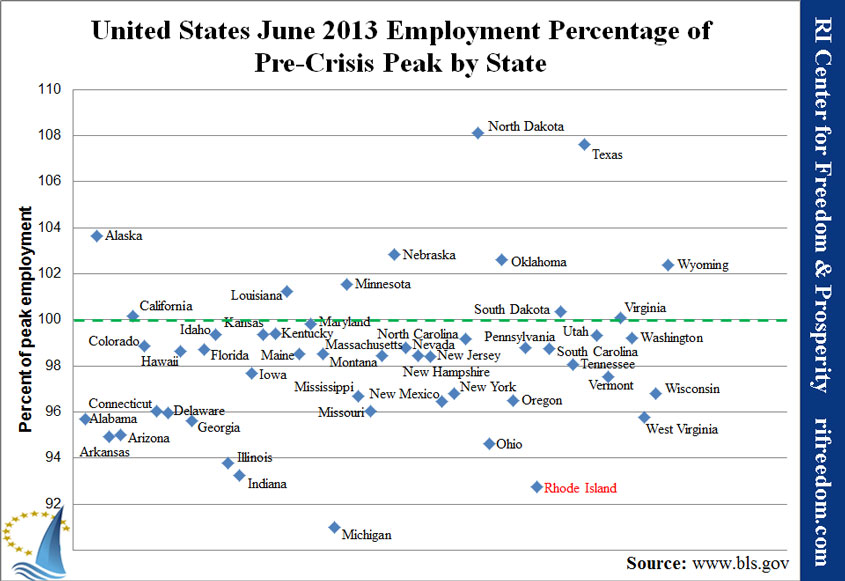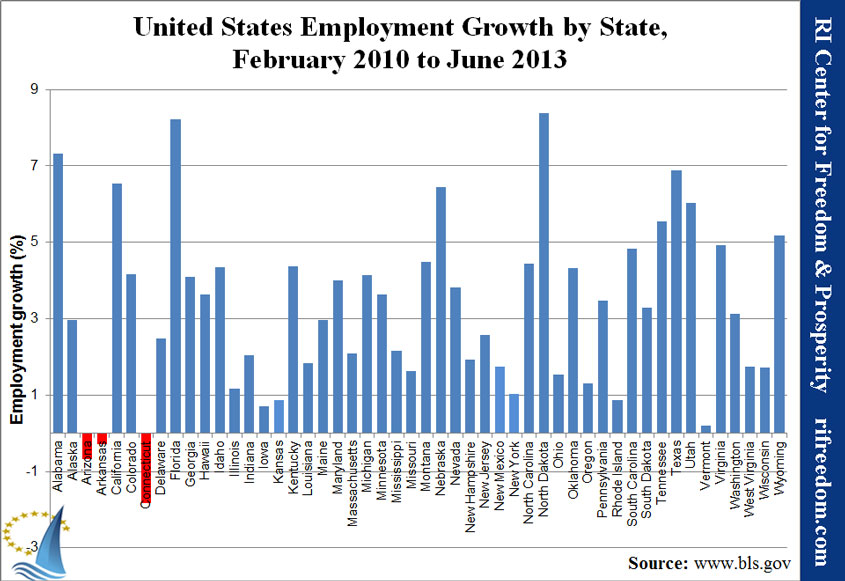June Employment, Edging Down
Former Bureau of Labor Statistics (BLS) chief Keith Hall thinks the unemployment rate as reported is “misleadingly low” and should be more like 10%, rather than 7.6%. A key data point in that assessment is an alternate measure of the labor force’s ability to find work:
A broader (and more accurate) measure of the state of US labor — called U-6, which includes the underemployed — jumped sharply in June to 14.3 percent from 13.8 percent the month before.
That’s a 3.6% increase, and if Rhode Island proves to have seen a similar jump, its U-6 rate could be over 17%. The nation has been debating the significance of an unemployment rate that seems only to be going down or holding steady because increasing part-time jobs are replacing full-time jobs. In Rhode Island, the unemployment rate looks better not only for that reason, but also because the labor force is shrinking. That is, people are giving up looking for work and/or leaving the state.
A simple chart, illustrating this picture, shows the trends for employment and labor force (which is employment plus people who say they’ve looked for work in the past month).
We’ve pretty much flat-lined, at this point, in employment and labor force, despite the proliferation of part-time-only jobs. Putting that trend in the context of our neighboring states, Massachusetts and Connecticut, it appears that the most likely route by which Rhode Island can catch up is for the other two to fall behind.
With regard to the national recovery, the most relevant action from Rhode Island’s point of view is comparison with Michigan, with the two states having long been the farthest from their pre-recession peak employment. Despite a large margin between the them, Michigan (which became a right-to-work state at the end of last year) has been making rapid progress in catching up and continued that trend this month. However, from the other end, Rhode Island has remained pretty much in the same spot as some other states have lost ground.
Finally, the Ocean State’s progress since the national jobs recession arguably ended in February 2010 has hardly moved in months and actually lost some ground in June.






